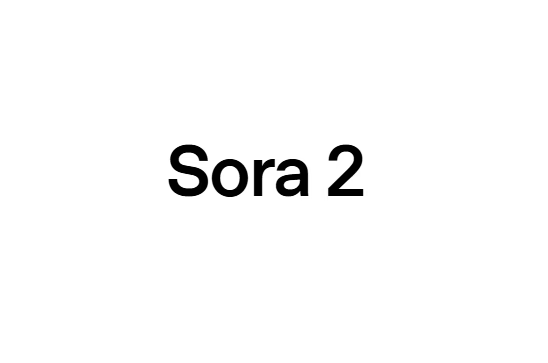Table of Contents


Want to Boost Rankings?
Get a proposal along with expert advice and insights on the right SEO strategy to grow your business!
Get StartedOpenAI has released Sora 2, its most advanced video and audio generation model yet. Alongside the model comes a new iOS app where users can create, remix, and even place themselves inside AI-generated clips. The launch is a major step forward for AI-driven creativity, raising both excitement and questions about how we’ll use technology to tell stories and connect with one another.

On September 30, 2025, OpenAI announced Sora 2. The update marks a decisive step beyond the original Sora, which debuted in early 2024. That first model demonstrated that machines could generate videos with hints of physical logic, but it often bent the rules of reality.
But the results often looked off. Movements broke the rules of physics, objects warped, and everything felt like a clever experiment rather than a finished product.
Free SEO Audit: Uncover Hidden SEO Opportunities Before Your Competitors Do
Gain early access to a tailored SEO audit that reveals untapped SEO opportunities and gaps in your website.

Sora 2 is a different story.
This version aims to bring AI-generated motion into closer alignment with the physical world. Movements look grounded, objects interact more naturally, and sound is woven into the fabric of the scene instead of being tacked on.
In other words, clips feel less like prototypes and more like something you could actually use.
With Sora 2, the jump feels bigger than usual. Watching the output, you notice less of the technical scaffolding and more of the story unfolding.
From Rough Sketches to Realism
Earlier AI video models often cut corners. A scene might look fine initially, but as you watch longer, it starts to feel strange. People might morph mid-step, or objects move in ways that just don’t make sense.
Sora 2 smooths out many of those problems.
Characters now move with a sense of weight, as if they’re anchored in their surroundings. Water reacts when it’s disturbed, light falls in the right direction, and sound blends naturally into the action.
It’s not perfect, and glitches still appear if you look closely, but the difference is notable.
Small details, like a character tripping or an object slipping from someone’s hand, now seem like natural accidents rather than digital glitches. That kind of detail makes the whole scene more convincing.
Sora 2 is here. pic.twitter.com/hy95wDM5nB
— OpenAI (@OpenAI) September 30, 2025
Audio That Feels Part of the Scene
Another major improvement is sound.
In earlier models, audio was either absent or awkwardly layered on top. Sora 2 generates speech, ambient noise, and sound effects that sync with the action.
If two people argue in a snowy mountain setting, their voices echo in the cold air. If a door slams, you hear the impact at the exact moment it happens. These touches matter because sound is half of how we experience moving images. Without it, even the most realistic video feels incomplete.
With Sora 2, video and audio finally come together.
Bringing People Into the Picture
Perhaps the feature that will get the most attention is cameos. Using the new Sora app, you can record a short clip of yourself and then drop your likeness into generated videos.
During internal testing, OpenAI staff apparently couldn’t stop experimenting with it.
Colleagues were inserting each other into wild scenarios, laughing at the results, and sharing creations like inside jokes.
I can imagine the same thing happening once the public gets access: friends making cameos in each other’s videos, families creating skits, or classrooms using it for playful storytelling.
For me, this is where the technology feels both fascinating and a little unsettling.
On one hand, it’s a new form of creative expression, and on the other hand, it raises real questions about consent and control.
Control and Safety Features
OpenAI says it has built guardrails into Sora 2 and the app. If you create a cameo, you decide who can use it. You can see every video where your likeness appears, even drafts made by someone else. And you can remove or block your cameo from being used at any time.
For teenagers, there are tighter limits by default. Daily viewing caps, stricter cameo permissions, and parental controls help prevent overuse or unwanted exposure.
Parents can manage settings directly through ChatGPT, turning off personalization, limiting scrolling, or adjusting messaging access.
The company is also scaling up human moderation teams to review cases of bullying or misuse quickly. Automated safety systems catch much of the obvious harmful content, but real oversight is still part of the plan.
This matters because many social platforms have historically optimized for engagement at the expense of wellbeing.
OpenAI is making a point to say it’s not following that playbook. The feed is biased toward people you know, and the app is designed to encourage making, not endless watching.
Whether that philosophy survives once the user base scales is an open question, but at least the intent is different from the start.
The Sora App: A Social Tool for Creativity
The app is now available on iOS, starting in the U.S. and Canada. Access is invite-based, which nudges you to join with friends rather than arriving alone. That choice reinforces the idea that Sora is meant to be social, not solitary.
Inside, you can generate clips, remix other people’s prompts, and discover creations in a personalized feed. Unlike platforms that push viral content from strangers, Sora leans heavily on existing connections.
So far, the focus is on fun and experimentation. You can star in a fantasy battle, reimagine yourself as an explorer, or create short skits with friends. But the underlying technology is capable of much more, and it’s not hard to picture serious uses emerging alongside the playful ones.
Beyond Entertainment: Where This Could Go
Tools like Sora 2 will naturally draw interest from creators, educators, and professionals.
- Filmmakers might use it to storyboard scenes, testing how a sequence plays out before committing to expensive shoots.
- Teachers could place students inside historical reenactments, turning lessons into interactive experiences.
- Researchers might simulate physical scenarios, from scientific experiments to training environments.
Of course, these same abilities could be misused. Creating realistic videos of people who never acted in them blurs the line between fiction and evidence. Even with safeguards, it’s not hard to imagine someone abusing the tool for manipulation. That tension—between creativity and risk—will likely define the conversation around Sora for some time.
Availability and What’s Next
Right now, Sora 2 is free to use within generous limits. If demand exceeds available computing resources, OpenAI may introduce paid options for additional generations.
ChatGPT Pro subscribers already have access to an enhanced version, Sora 2 Pro, via sora.com, with the same model coming soon to the app. Developers will eventually be able to integrate Sora 2 into their own projects through an API.
Importantly, the older Sora 1 Turbo isn’t going away. Anything you’ve already created remains
Tips If You’re Trying It Out
If you’re planning to explore Sora 2, here are a few things worth keeping in mind:
- Experiment with simple prompts first. Start small to understand how the model responds before trying complex scenes.
- Be selective with cameos. Share your likeness only with people you trust.
- Play with styles. Test realism, animation, or abstract prompts to see the range of results.
- Use parental controls if needed. They’re built in for a reason, and they can help keep experiences safe for younger users.
- Treat content responsibly. Remember, these are generated clips, not actual events. Don’t pass them off as real recordings.
Key Takeaways
- Sora 2 produces more realistic video and sound than its predecessor, capturing details that make scenes feel authentic.
- The new Sora app centers on creativity and collaboration, not endless scrolling.
- Cameos let users appear in AI-made clips, raising new opportunities and responsibilities.
- Safety features are built in, from parental controls to cameo permissions.
- Potential goes far beyond entertainment, but risks around misuse remain.
About the author
Share this article
Find out WHAT stops Google from ranking your website
We’ll have our SEO specialists analyze your website—and tell you what could be slowing down your organic growth.














